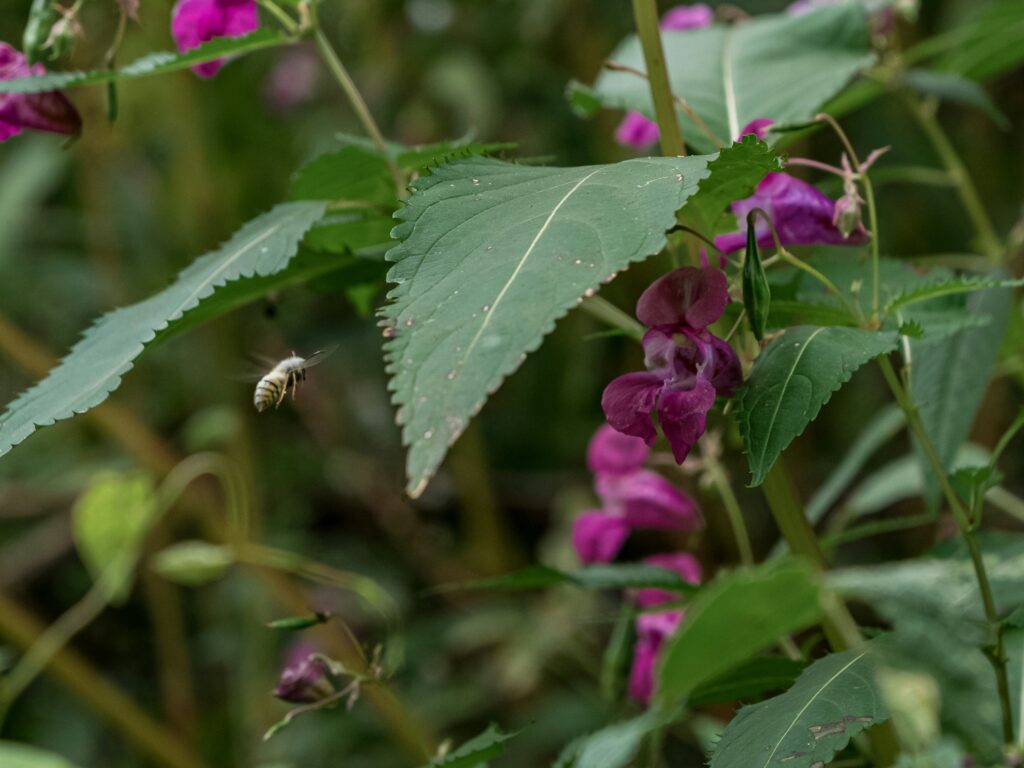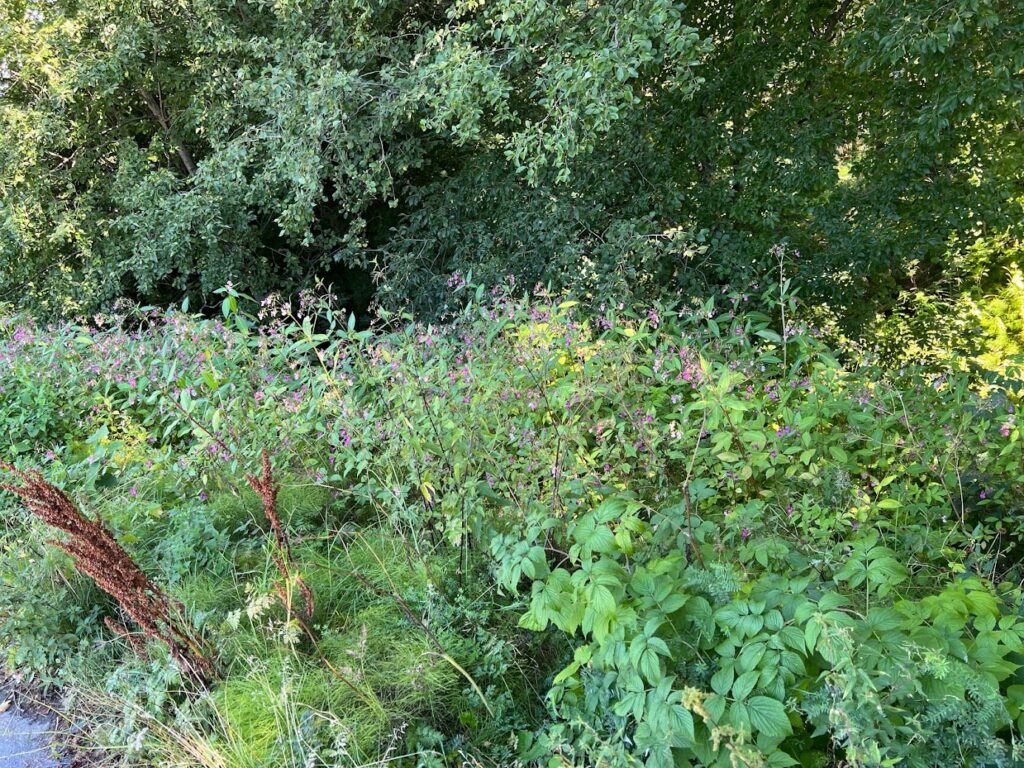Himalayan Balsam (Impatiens glandulifera) is an alien, invasive species originating from the Himalayan region. It was introduced to Norway as a garden plant in the 19th century. This species has a rapid rate of spread and poses an environmental problem by forming dense stands that compete with and shade out other plants. This can result in changes to the vegetation along waterways and threaten the existence of other species. In areas with dense stands lacking undergrowth, erosion can also occur when the plants wither in the autumn.

Himalayan Balsam is an annual plant that spreads solely by seed. A single plant can produce up to 4000 seeds. The mature, green seed capsules explosively open upon touch, dispersing the seeds up to 4-6 meters away. Since seed dispersal is the only way the plant reproduces, it is crucial to implement measures early in the flowering period, before seed setting begins.

Water is a significant dispersal pathway for Himalayan Balsam, and when the plants grow near waterways, they can effectively spread with the water flow over long distances. Soil movement and garden waste can also contribute to seed dispersal. Therefore, caution should be exercised during digging and moving of soil masses suspected of containing Himalayan Balsam. The use of machinery, equipment, and personal protective gear can also inadvertently contribute to the spread of the seeds. Soilsteaming has proven to be highly effective in combating both the plants and the seeds. This means that soil masses with this growth can be reused after treatment with SoilSaver.
Here follow some useful links:
https://www.rhs.org.uk/weeds/himalayan-balsam
https://www.wildlifetrusts.org/wildlife-explorer/wildflowers/himalayan-balsam